For audiophiles, likely the most famous RCA ever. Don't think about finding this in the bins. Some of my favorites are pictured below.
Talk Vinyl: Buying Classical Records, a Beginner's Guide, Part III
Labels: RCA, Mercury
Attention: I have created a blog label Classical Music - Buying Records. Just click and all posts so far in the series shall appear. The blog label is also in the sidebar (roll down).
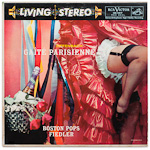 RCA (wiki) US recording giant RCA was a great rival of Columbia. Make sure you read the wiki entry for the rich history. And, of course, should you ever be in NYC, make sure you visit the resplendent RCA building in Rockefeller Center. And then you owe it to yourself to go to the nearby Radio City Music Hall where, during the Holiday Season, you can catch the Rockettes kicking their legs much like the cover album (my personal RCA favorite). Forget about fine arts, there is nothing better than that. :-)
RCA (wiki) US recording giant RCA was a great rival of Columbia. Make sure you read the wiki entry for the rich history. And, of course, should you ever be in NYC, make sure you visit the resplendent RCA building in Rockefeller Center. And then you owe it to yourself to go to the nearby Radio City Music Hall where, during the Holiday Season, you can catch the Rockettes kicking their legs much like the cover album (my personal RCA favorite). Forget about fine arts, there is nothing better than that. :-)- Living Stereo It can safely be said that no respectable audiophile would be without one of these (unlike Columbia, shunned by many). The long running series contain many gems but these were by a few artists, and forgettable items outnumber them. I just found out there is a website devoted to it, where you can browse all the great covers. Now, a Living Stereo recording is most often marked by the iconic black strip running across the top of the cover, but as you can see from the website, some have smaller and less pronounced captions. The Living Stereo series was, and still is, the bread and butter of RCA; so many titles were in continual production even into Red Seals days, so it is important to look at the inner label. Stereo/Mono are coded (for classical's) LSC/LM. Make sure you check. the term Living Stereo lasted well into the Red Seals age, and they are not as desirable. In general, judge by the inner labels.
- Recording and Halls The excellence of the recordings were in no doubt from the start. the producer/engineer team of Richard Mohr/Lewis Layton, like EMI's 2 Christophers, always delivered. While the Boston Symphony Hall is acoustically world renowned, the Chicago Orchestral Hall is more problematic. It is testament to the team that the recordings were so consistently good.
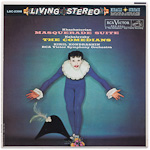
- Inner Labels As RCA pressings declined in quality later, it is important to identify earlier pressings. However, many of the famous ones have been over-used and traded thrice over, so paying good money is a risky proposal. Shaded Dog refers to the earliest and most coveted pressings (in the vinylbeat link provided it is label 2I; the dog and phonograph are shadowed, hence the name). White Dog Later the shadow disappeared (4A), and these are still very good pressings. Dynagroove (4D) Even later on, RCA introduced the Dynagroove. These have a "bad" audiophile reputation, but most of the ones that I have sounded quite good! More info here too.
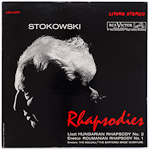
- Soria (wiki) This is an odd series, supposedly deluxe, and they are not often seen. The most famous issue is the Royal Ballet pictured above (Ansermet actually recorded everything in that album with his own Swiss orchestra, in performances and Decca sound just as splendid, that are worth nothing; just figure). It should be noted that quite a few of Soria's offerings (like VPO, Karajan, Monteux) actually originated from Decca, and they were later reclaimed by Decca/London and re-issued in the STS budget series. Not for the Royal Ballet though. :-( So, no need to fuss over this series otherwise.
- Red Seal Then RCA entered the Red Seal era (label like 6E), and the pressings (and quality of artists) rapidly declined. Later on, pressings were wafer thin and problematic in terms of noise, even tracking. In the 70's and 80's I mostly avoided buying RCA for these reasons.
- Victrola Stereo/Mono are coded VICS/VIC, so beware. Like Odyssey and Seraphim, this long-running budget label of RCA cannot be neglected. Many of the best Living Stereos were re-issued in this budget label, and you are going to come across tens of these (many in dollar bins) before seeing a Shaded/White Dog. In fact, Reiner's earlier However, more than their counterparts at Columbia and Angel, their quality declined even more rapidly, and it is important to pick and choose. Basically, stick with the earlier maroon label (5B). Later pressings are in light pink (like 6A) and the earlier of these are still thick and sturdy, whereas very soon they turned thin and floppy. The sleeves of the later iterations, unlike the elegant early duo-tone with drawings, have horrible graphics. Avoid the latter.
:format(jpeg):mode_rgb():quality(40)/discogs-images/R-5620849-1401951882-3921.jpeg.jpg)
- Gold Seal (label like 7) This latter day budget/mid-priced label attempted to improve things but I don't like them. Some of these have been remastered and they simply sound different. Pressing quality is highly variable, and I had worse luck than my friend Andy. Cover art is lousy. Given the abundance of Victrola's etc, I'd pass.
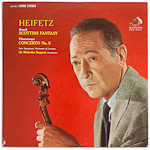
- Camden Lousy quality and totally forgettable.
- Artists Early On Like Columbia, RCA started out recording mostly American artists, but later on they were barely competitive in my opinion. Early On was the Golden Age. Orchestral Music Here, the Chicago Symphony under Fritz Reiner made many excellent records (essential Strauss, Bartok, and surprisingly, Mahler, French and Spanish music) that most audiophiles have at least read about. Keep in mind that, aside from the sonic blockbusters, Reiner's recordings of the regular repertoire (Beethoven, Tchaikovsky, etc) are not held in high esteem. Jean Martinon, the unlucky successor, also made some excellent records, mostly French music, but also a good Nielsen 4th (also excellent Prokofiev with French orchestra). The other orchestra was the Boston Symphony, which made many good records under two conductors. Claude Monteux is a giant, not showy but always good. If you see his records (whether on RCA, Decca or Philips), just grab them. Although on RCA, the Monteux recordings with the London Symphony and Vienna Philharmonic (all excellent) originated from Decca, and equivalent high quality LPs could be more cheaply obtained in the later London STS issues. The other is Charles Munch, who was the opposite, fiery, flamboyant. Munch could be exciting (essential Berlioz and Saint Saens), but sometimes the playing could be a little coarse due to his urgency. Get a few of his on Victrola and see if you like him as much as I do (for me, he's never boring, even in German repertoire; one day I should read this lengthy and dry scholarly discography). Later on, BSO was headed by Eric Leinsdorf, a kappemeister who is reliable but seldom inspiring; I'd avoid the many recordings of his. RCA also recorded 2 essential albums of Russian favorites with the excellent Kiril Kondrashin (one pictured above, the other being Capriccio Italien/Espanol). And let us not forget another audiophile fav, Leopold Stokowski's Rhapsodies. I'd forget Morton Gould's recordings. Pianists The field is totally dominated by Arthur Rubinstein, whose recordings during this period are almost all excellent (unlike his later remakes; the Saint Saens Concerto No. 2 is a must). In concerto recordings, he also had excellent support. And then the excellent Byron Janis made some wonderful recordings (essential Rachmaninov). Although Van Cliburn caused a sensation by winning the Tchaikovsky Competition at the heights of the Cold War, his many recordings are just serviceable, and none provide any real insight - avoid. Rather, a few others pianists recorded one- or two-off gems: Sviatoslav Richter (essential Brahms Concerto No.2 and Beethoven Concerto No.1); Malcolm Frager (essential Prokofiev Concerto No.2, rare) and Emil Gilels (anything of his is essential). John Browning also made quite a few records, and he is usually good. Violinists Here the domination of Jascha Heifetz is total and deserved, and there is no need to dwell on this legend. But I'd like to bring your attention to another fiddler, the great Henryk Szeryng, whose Lalo Symphonie Espagnol and Brahms Violin Sonatas (with Rubinstein) are still definitive. Cellist The late recordings of the great Gregory Piatigorsky are still worthwhile. Chamber Music Aside those made by the star soloists with others, the Festival Quartet, though austere, is collectible. The early Juilliard Quartet recordings tend to be over-shadowed by their extensive Columbia discography.
:format(jpeg):mode_rgb():quality(40)/discogs-images/R-12530193-1537066597-6503.jpeg.jpg)
- Artists Later On After the Golden Age, by the time of Red Seal, RCA really lost steam. Orchestral Music Slim picking. In Chicago, they recorded a few good albums with young Seiji Ozawa (an early Messiaen Turangalila stands out), but by the time of Solti lost the CSO to Decca. And, after the lackluster Leinsdorf, by the time Ozawa assumed leadership of the BSO, lost it to DG. RCA recorded a bit of Andre Previn with LSO (very good Vaughn Williams cycle, Walton symphonies) but later lost them too to EMI. Without an orchestra of their own, they poached Eugene Ormandy and the Philadelphia from Columbia, and needlessly re-recorded a lot of what Columbia had recorded before. Problem is, Ormandy by this time was getting old and jaded, and smooth sound became lax. None of his RCA recordings are better than the earlier Columbia equivalents, so avoid. Then came young James Levine, who recorded, among other things, a good Mahler cycle with various orchestras (sonically less so). Pianists Rubinstein, by the Red Seal age, was pretty old, but RCA kept on re-recording many concertos, usually partnered by Ormandy - NONE of them are better than his earlier efforts on Living Stereo, so avoid. RCA also recorded Horowitz, now in his late age; given his extensive Columbia catalogue, there is really nothing new. Peter Serkin, son of Rudolf, was an excellent pianist and he recorded some interesting material (more in chamber music). And RCA also recorded John Ogdon in some off-beat repertoire. In the age of the LP, I cannot recall any other pianist of unusual merit. Violinists No one could follow in the footstep of Heifetz, whose recordings remained best-sellers forever, not his disciple Erik Friedman (though his Sarasate/Chausson/Ravel album has become a Chinese audiophile favorite), nor the likes of Eugene Fodor. Cellist Lynn Harrell made a few records, but I always find him too smooth. Chamber Music Here RCA did better. The Guarneri Quartet recorded just about everything over their long career. The Cleveland Quartet was younger and more ardent (later they recorded for Telarc). Both were quite accomplished but of course face vast competition in this field. Try a few. Then there is the unusual formation of TASHI (a super lineup of pianist Peter Serkin; clarinetist Richard Stoltzman; violinist Ida Kavafian and cellist Fred Sherry) who recorded innovative programs (including Messiaen's Quartet for the End of Time), and they are recommended.
:format(jpeg):mode_rgb():quality(40)/discogs-images/R-7470773-1442146155-1604.jpeg.jpg)
:format(jpeg):mode_rgb():quality(40)/discogs-images/R-6309259-1416144086-8627.jpeg.jpg) My personal favorite, not even classical. But the popular arrangements of folk music like Troika and Midnight in Moscow will melt any heart. Try it out by streaming!
My personal favorite, not even classical. But the popular arrangements of folk music like Troika and Midnight in Moscow will melt any heart. Try it out by streaming!Mercury (wiki) No record label inspires more awe (and headaches) in the audiophile. Awe, because the audio press fuss endlessly over the re-issues, be them CDs, SACDs or LPs. Of course, they were also popularized by HP's List. Headaches, because most audiophiles fail to play back most Mercury's to their satisfaction (usually too shrill). All this is moot. It is not often that one spots a good Mercury LP, not to mention one with a good price. When I started buying LPs in the late 70's, Mercury was already over, so it is embarrassing for me to write this capsule, as my few copies were all acquired later. However, I did own most of the worthwhile Mercury CD re-issues, so I can rate the musical performances.
- Mercury Living Presence We are only talking about Living Presence. The cover art is basically divided into 3 types: a broad red "Stereo" stripe across the top; a smaller red ribbon diagonally strapped to the left upper corner; and the most iconic, a broad film tape across the top, indicating magnetic film tape recording (brought over from Everest). It has to be said the cover art is usually excellent.
:format(jpeg):mode_rgb():quality(40)/discogs-images/R-7652049-1445986556-3628.jpeg.jpg)
- Recordings Even more than RCA and Decca, Mercury used minimal miking (see the links), but the results are perhaps more fabled than real (heresy!). More than RCA and Decca, the top tends to be quite dry and hot, and the earlier the recording, the more so. Usually, the Minneapolis recordings are quite dry. The Detroit Symphony ones fare better. And the London recordings all sound very good - I tend to think, like for RCA, these were done by Decca engineers (I could well be wrong, as many of these bear the magnetic tape stripe).
:format(jpeg):mode_rgb():quality(40)/discogs-images/R-2511374-1497692225-6473.jpeg.jpg)
- Inner Labels Read this excellent Label Guide. Mercury's pressings deteriorated rapidly. The Maroon labels were good, but even the so-called "lighter maroon" (more like light raspberry) can be noisy, but some are still acceptable.
:format(jpeg):mode_rgb():quality(40)/discogs-images/R-4783039-1386413010-5296.jpeg.jpg)
- Wing This is Mercury's latter-day budget re-issue label. They are generally horrid! Avoid! Quite a few are electronically re-channeled too.
- Artists Given the short span of Mercury, this is the easiest task I have had so far in this series. Orchestral Music The most interesting thing is, although Mercury lacked "star power" in terms of both orchestras and conductors, they did amazingly well. Detroit Symphony/Paul Paray Even now, they are totally under-rated. Paray not only recorded the French repertoire exceedingly well, he excelled in almost everything he did, whether it was Sibelius or Schumann. IMHO, he is no less great a conductor than Munch, Monteux and Ansermet, not yet given his due. Antal Dorati/London Symphony Down to the last one, these were great recordings, the most famous of which being likely Stravinsky's Firebird. But I like him in just about everything, from Brahms to Dvorak and the second Viennese school. Great conductor. Now, he recorded profusely earlier with the Minneapolis Orchestra but, as mentioned, those were often sonically challenged. And then there was Howard Hanson, whose own compositions and recordings with the ok Rochester Symphony were by now surpassed. Wind Band One of the most prolific recording artists was Frederick Fennell, but I am not a fan of this kind of music, and pass. Soloists In piano, Mercury had the great Byron Janis, recordings of which duplicated his own RCA recordings (but I give the edge to RCA). In Violin, I treasure those recordings by Henryk Szeryng. And in Cello, all of the Janos Starker's recordings are desirable (cool, but excellent).
:format(jpeg):mode_rgb():quality(40)/discogs-images/R-5551447-1419893256-5674.jpeg.jpg)
- Philips Golden Import After Mercury was acquired by Philips, their recordings appeared under this label, covered in my Philips survey (Part II).
:format(jpeg):mode_rgb():quality(40)/discogs-images/R-4937221-1379963914-5807.jpeg.jpg)

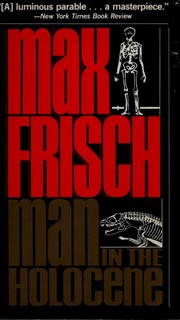

:format(jpeg):mode_rgb():quality(40)/discogs-images/R-5299825-1528316585-5657.jpeg.jpg)
:format(jpeg):mode_rgb():quality(40)/discogs-images/R-1853238-1332437383.jpeg.jpg)
:format(jpeg):mode_rgb():quality(40)/discogs-images/R-562511-1249927338.jpeg.jpg)
:format(jpeg):mode_rgb():quality(40)/discogs-images/R-4038282-1378659404-9569.jpeg.jpg)
:format(jpeg):mode_rgb():quality(40)/discogs-images/R-3112682-1476752662-8566.jpeg.jpg)
:format(jpeg):mode_rgb():quality(40)/discogs-images/R-4130544-1356297329-8952.jpeg.jpg)
:format(jpeg):mode_rgb():quality(40)/discogs-images/R-4805097-1428175872-2472.jpeg.jpg)
:format(jpeg):mode_rgb():quality(40)/discogs-images/R-3481300-1332094988.jpeg.jpg)
:format(jpeg):mode_rgb():quality(40)/discogs-images/R-2116292-1379840437-3487.jpeg.jpg)
:format(jpeg):mode_rgb():quality(40)/discogs-images/R-4280086-1360541273-8853.jpeg.jpg)
:format(jpeg):mode_rgb():quality(40)/discogs-images/R-1958582-1329999668.jpeg.jpg)
:format(jpeg):mode_rgb():quality(40)/discogs-images/R-6256684-1545833308-3885.jpeg.jpg)
:format(jpeg):mode_rgb():quality(40)/discogs-images/R-5460352-1393934541-8805.jpeg.jpg)
:format(jpeg):mode_rgb():quality(40)/discogs-images/R-10178572-1492972227-8315.jpeg.jpg)
:format(jpeg):mode_rgb():quality(40)/discogs-images/R-8015766-1530946543-7939.jpeg.jpg)
:format(jpeg):mode_rgb():quality(40)/discogs-images/R-5338042-1390905654-3323.jpeg.jpg)
:format(jpeg):mode_rgb():quality(40)/discogs-images/R-7798555-1524239580-8674.jpeg.jpg)
:format(jpeg):mode_rgb():quality(40)/discogs-images/R-4351485-1442954214-9874.jpeg.jpg)
:format(jpeg):mode_rgb():quality(40)/discogs-images/R-6936097-1431036545-4537.jpeg.jpg)
:format(jpeg):mode_rgb():quality(40)/discogs-images/R-5437573-1393344032-7507.jpeg.jpg)
:format(jpeg):mode_rgb():quality(40)/discogs-images/R-4510830-1366943784-3422.jpeg.jpg)


:format(jpeg):mode_rgb():quality(40)/discogs-images/R-3328743-1517008317-4578.jpeg.jpg)
:format(jpeg):mode_rgb():quality(40)/discogs-images/R-4152121-1554320699-2880.jpeg.jpg)
:format(jpeg):mode_rgb():quality(40)/discogs-images/R-6988613-1431110439-5109.jpeg.jpg)
:format(jpeg):mode_rgb():quality(40)/discogs-images/R-5439897-1393407526-9829.jpeg.jpg)
:format(jpeg):mode_rgb():quality(40)/discogs-images/R-5991859-1408275261-2072.jpeg.jpg)
:format(jpeg):mode_rgb():quality(40)/discogs-images/R-1878235-1249632570.jpeg.jpg)
:format(jpeg):mode_rgb():quality(40)/discogs-images/R-10486583-1509897525-3704.jpeg.jpg)















